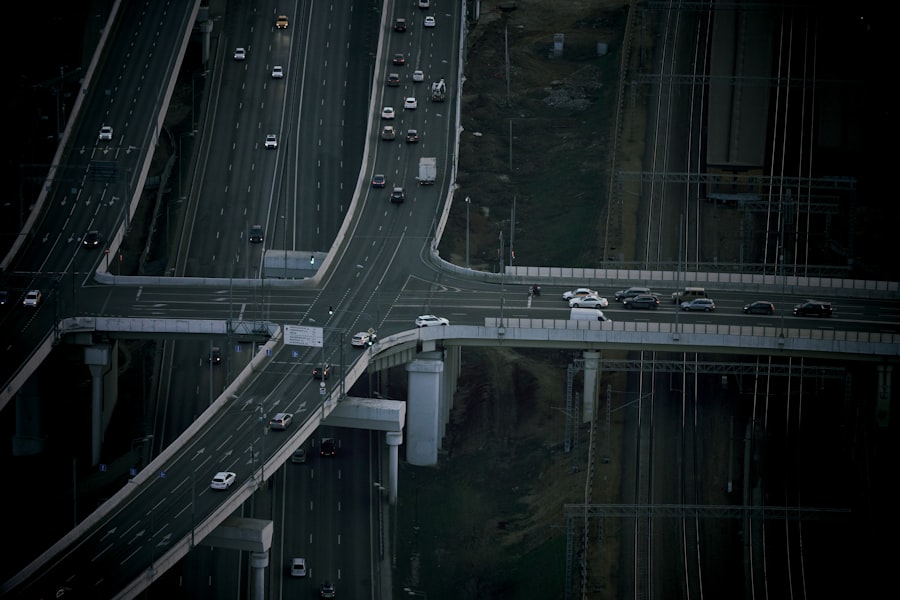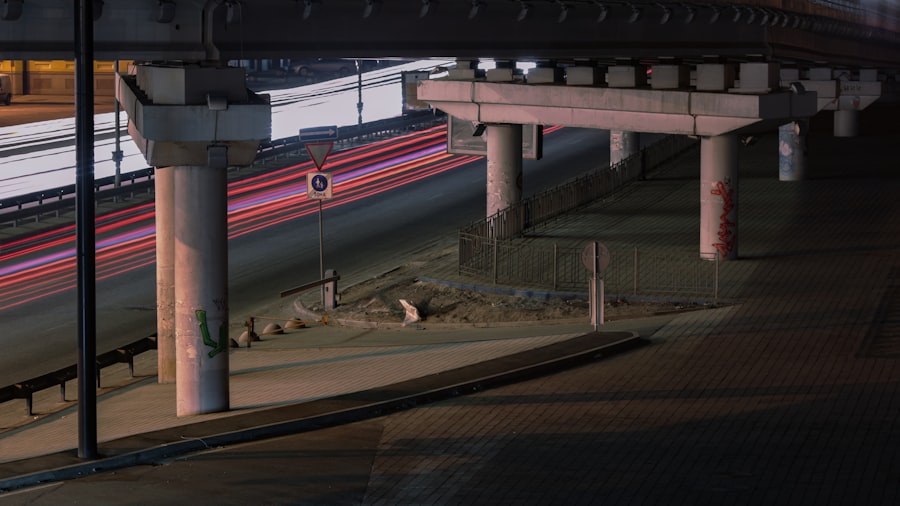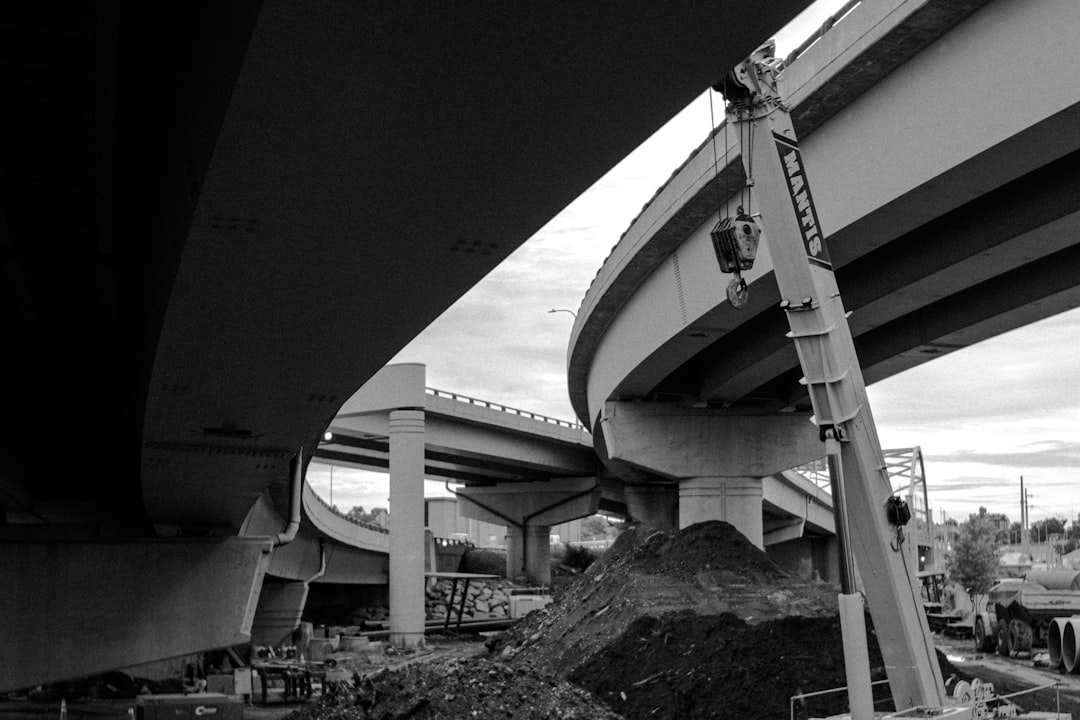New York City, a bustling metropolis known for its iconic skyline and vibrant culture, is grappling with a significant challenge: its aging infrastructure. Many of the city’s essential systems, from transportation to utilities, were constructed decades ago and are now showing signs of wear and tear. The infrastructure that once symbolized progress and innovation is now a source of concern, as it struggles to meet the demands of a growing population and an evolving urban landscape.
The deterioration of these systems not only affects the daily lives of millions but also poses risks to public safety and economic stability. The aging infrastructure of New York City is a complex issue that encompasses various sectors, including transportation, utilities, and public services. As the city continues to expand, the strain on these systems becomes increasingly evident.
Crumbling roads, outdated subway lines, and insufficient water supply systems are just a few examples of the challenges that residents face. The urgency to address these issues is compounded by the fact that many of these systems were designed for a much smaller population, leading to inefficiencies and increased vulnerability to failures. The need for comprehensive assessments and strategic investments has never been more critical.
Key Takeaways
- NYC’s infrastructure is aging and in need of significant investment and revitalization.
- The subway system in NYC is struggling, leading to transportation woes for residents and commuters.
- The electrical grid in NYC is fragile, leading to power outages and disruptions.
- The water system in NYC is deteriorating, posing potential risks to public health and safety.
- Waste management in NYC is a significant challenge due to the city’s large population and limited space for disposal.
Transportation Woes: The Struggle of NYC’s Subway System
The New York City subway system, once hailed as a marvel of engineering, is now emblematic of the city’s transportation woes. With over 5 million daily riders, the subway is a lifeline for many New Yorkers; however, it is plagued by delays, overcrowding, and outdated infrastructure. The system’s aging trains and tracks often lead to service interruptions, frustrating commuters who rely on timely transportation to navigate their busy lives.
As the city’s population continues to grow, the strain on this vital system only intensifies. Moreover, the subway’s challenges extend beyond mere inconvenience. Safety concerns have also emerged as a significant issue, with reports of accidents and incidents on the rise.
The lack of modern amenities and maintenance has made the subway less appealing to potential riders, further exacerbating congestion on surface transportation options. To address these challenges, city officials must prioritize investments in upgrading the subway system, ensuring that it can accommodate the needs of a modern urban population while maintaining safety and reliability.
Power Outages and the Fragile Electrical Grid

New York City’s electrical grid is another critical component of its infrastructure that is showing signs of fragility. Power outages have become increasingly common, leaving residents without electricity for extended periods. These outages can disrupt daily life, affecting everything from heating and cooling systems to essential services like hospitals and emergency response units.
The aging infrastructure of the electrical grid is unable to keep pace with the growing demand for power, particularly during peak usage times. The vulnerability of the electrical grid is further exacerbated by extreme weather events, which have become more frequent due to climate change. Storms can cause widespread damage to power lines and substations, leading to prolonged outages that can take days or even weeks to resolve.
As New York City faces the dual challenges of an aging grid and climate-related disruptions, it becomes increasingly clear that significant investments in modernization and resilience are necessary to ensure a reliable power supply for all residents.
The Deteriorating State of NYC’s Water System
| Issue | Metrics |
|---|---|
| Water Quality | pH levels, turbidity, coliform bacteria count |
| Infrastructure Age | Percentage of pipes over 100 years old, average age of water mains |
| Leakage | Annual water loss percentage, number of reported leaks |
| Lead Contamination | Lead levels in water, number of lead service lines |
| Compliance Violations | Number of violations, types of violations |
The water system in New York City is another area in dire need of attention. While the city is known for its high-quality tap water sourced from pristine reservoirs, the infrastructure that delivers this water is aging and in disrepair. Leaks in aging pipes can lead to significant water loss and contamination risks, posing health hazards to residents.
Addressing these issues requires a comprehensive approach that includes upgrading aging pipes, investing in new treatment technologies, and implementing sustainable practices to manage stormwater runoff. By prioritizing the modernization of its water system, New York City can ensure that its residents have access to clean and safe drinking water while also protecting its natural resources from pollution.
The Challenge of Waste Management in a City of Millions
Waste management in New York City presents another formidable challenge as the population continues to swell. With millions of residents generating vast amounts of waste daily, the city’s sanitation system is under constant pressure. Landfills are reaching capacity, and recycling rates remain lower than desired, leading to environmental concerns about waste disposal practices.
The city’s waste management infrastructure struggles to keep up with the demands placed upon it, resulting in overflowing trash bins and unsightly litter in public spaces. To tackle these challenges effectively, New York City must adopt innovative waste management strategies that prioritize recycling and composting while reducing overall waste generation. Public education campaigns can play a crucial role in encouraging residents to participate in recycling programs and adopt more sustainable practices.
Additionally, investing in advanced waste processing technologies can help streamline operations and reduce the environmental impact of waste disposal.
The Impact of Aging Bridges and Tunnels on NYC’s Commuters

Bridges and tunnels are vital arteries for transportation in New York City, connecting boroughs and facilitating the movement of goods and people. However, many of these structures are aging and require significant repairs or upgrades. The deterioration of bridges can lead to traffic congestion and delays for commuters who rely on them daily.
Moreover, safety concerns arise when structural integrity is compromised, putting both drivers and pedestrians at risk. The impact of aging bridges and tunnels extends beyond inconvenience; it also has economic implications for the city. Delays in transportation can hinder commerce and productivity, affecting businesses that depend on efficient logistics.
To mitigate these issues, city planners must prioritize infrastructure assessments and allocate funding for necessary repairs or replacements. By investing in the maintenance and modernization of these critical structures, New York City can enhance mobility while ensuring public safety.
The Strain on NYC’s Communication Networks
In an age where communication is paramount, New York City’s communication networks are facing their own set of challenges. As technology evolves rapidly, the demand for reliable internet access and mobile connectivity has surged. However, many neighborhoods still experience inadequate service due to outdated infrastructure or lack of investment in broadband expansion.
This digital divide not only affects residents’ ability to work or study remotely but also limits access to essential services that increasingly rely on online platforms. The strain on communication networks has become particularly evident during emergencies when reliable connectivity is crucial for disseminating information and coordinating responses. To address these challenges, city officials must prioritize investments in expanding broadband access across all neighborhoods while ensuring that existing networks are upgraded to meet modern demands.
By fostering equitable access to communication technologies, New York City can empower its residents and enhance overall resilience.
The Vulnerability of NYC’s Healthcare Facilities in Times of Crisis
Healthcare facilities in New York City play a critical role in safeguarding public health; however, they too face vulnerabilities due to aging infrastructure. Many hospitals and clinics were built decades ago and may not be equipped to handle modern healthcare demands or emergencies such as pandemics or natural disasters. During crises like COVID-19, these vulnerabilities were laid bare as hospitals struggled with overcrowding and inadequate resources.
To bolster the resilience of healthcare facilities, significant investments are needed in both physical infrastructure and technology upgrades. This includes expanding capacity through new construction or renovations while also integrating advanced medical technologies that enhance patient care. By prioritizing the modernization of healthcare facilities, New York City can better prepare for future crises while ensuring that all residents have access to quality medical care.
The Role of Climate Change in NYC’s Infrastructure Failures
Climate change poses an existential threat to urban infrastructure worldwide, and New York City is no exception. Rising sea levels increase the risk of flooding in low-lying areas, while extreme weather events can overwhelm aging systems designed for less severe conditions. The city’s infrastructure was not built with climate resilience in mind; thus, it faces unprecedented challenges as climate-related impacts become more frequent.
To combat these threats effectively, New York City must adopt a proactive approach that incorporates climate adaptation strategies into infrastructure planning. This includes investing in green infrastructure solutions such as permeable pavements and green roofs that can absorb stormwater while reducing urban heat effects. By integrating climate resilience into its infrastructure development plans, New York City can safeguard its systems against future disruptions while promoting sustainability.
The Economic Toll of NYC’s Infrastructure Crisis
The deteriorating state of New York City’s infrastructure has far-reaching economic implications that extend beyond immediate inconveniences for residents. Delays caused by transportation failures can hinder business operations and reduce productivity across various sectors. Additionally, inadequate utilities can deter new businesses from establishing themselves in the city or lead existing ones to relocate elsewhere due to operational challenges.
Moreover, the costs associated with repairing or replacing aging infrastructure can strain city budgets and divert funds from other essential services such as education or public safety. As economic pressures mount due to infrastructure failures, it becomes increasingly clear that addressing these issues is not just a matter of public safety but also an economic imperative for maintaining New York City’s status as a global hub for commerce and innovation.
Solutions and Strategies for Revitalizing NYC’s Infrastructure
To revitalize its aging infrastructure effectively, New York City must adopt a multifaceted approach that prioritizes investment, innovation, and community engagement. First and foremost, securing adequate funding through public-private partnerships or federal grants will be essential for implementing necessary upgrades across various sectors. Additionally, embracing innovative technologies such as smart sensors can enhance monitoring capabilities while improving efficiency within existing systems.
Community engagement plays a crucial role in ensuring that revitalization efforts align with residents’ needs and priorities. By involving local stakeholders in decision-making processes regarding infrastructure projects, city officials can foster greater transparency while building trust among constituents. Furthermore, prioritizing sustainability initiatives will not only address current challenges but also lay the groundwork for a more resilient future.
In conclusion, revitalizing New York City’s aging infrastructure requires a comprehensive strategy that addresses immediate needs while planning for long-term sustainability. By investing in modernization efforts across transportation systems, utilities, healthcare facilities, communication networks, and waste management practices—while considering climate resilience—New York City can emerge stronger than ever before amidst its ongoing challenges.
In recent years, New York City has faced numerous challenges with its aging infrastructure, leading to significant disruptions and public concern. A related article on this topic can be found on MyGeoQuest, which delves into the complexities and potential solutions for these infrastructure failures. The article provides an in-depth analysis of the current state of NYC’s infrastructure and explores innovative approaches to address these pressing issues. For more information, you can read the full article by visiting MyGeoQuest.
WATCH THIS! The Real Cost of NYC Living: Your Wallet, Sanity, and Subway Survival Skills
FAQs
What is the NYC infrastructure failure?
The NYC infrastructure failure refers to the breakdown or malfunction of critical systems and structures that are essential for the functioning of the city, such as transportation, water supply, and power grids.
What are some examples of NYC infrastructure failures?
Examples of NYC infrastructure failures include power outages, subway delays and breakdowns, water main breaks, and bridge or tunnel closures.
What are the causes of NYC infrastructure failures?
Causes of NYC infrastructure failures can include aging infrastructure, lack of maintenance, extreme weather events, and increased demand on systems beyond their capacity.
How does NYC address infrastructure failures?
NYC addresses infrastructure failures by investing in maintenance and upgrades, implementing emergency response plans, and working to improve the resilience of critical systems to withstand future challenges.
What are the impacts of NYC infrastructure failures?
The impacts of NYC infrastructure failures can include disruptions to daily life, economic losses, public safety concerns, and damage to the city’s reputation.
